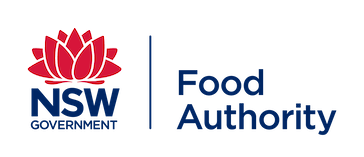NSW Food safety strategy delivers confidence
NSW Primary Industries Minister Katrina Hodgkinson has unveiled the NSW Government’s six year plan to drive and further enhance NSW’s reputation as a supplier of safe, quality food.
"Our plan for the future - Safe Food from Paddock to Plate, aims to ensure NSW continues to deliver superior quality food locally and globally, by reducing foodborne illness at the same time as cutting red tape," Minister Hodgkinson said.
"There is no better time for the NSW community to be encouraged to buy fresh, local produce, and for the NSW Government to focus on ensuring food safety in NSW.
"The NSW food industry operates in a competitive international market and contributes $113 billion to the NSW economy each year.
"The NSW Food Safety Strategy 2015- 2021 is a comprehensive strategy outlining the NSW Government’s commitment to food safety and quality management, to provide certainty and underpin confidence in the State’s food industry into the future.
"This strategy supports the NSW Agriculture Industry Action Plan, Primed for growth: Investing locally, connecting globally.
"The plan was developed in line with the NSW economic development framework that identifies priorities and opportunities for the state’s $12 billion primary industries sector.
"Safe food is big business and NSW rightly enjoys a reputation for supplying safe, quality food and food products.
“There are many opportunities for us to continue to support a thriving food sector in NSW as it moves into the future, and the NSW Food Authority is leading that charge through education, innovation and low cost regulation.
Minister Hodgkinson said while commitment to protecting people’s health and safety is the main focus, ensuring a cohesive and cooperative relationship between government, public health officials and industry is also key to the food business sector’s contribution to NSW’s growth and prosperity.
"One way we can continue to increase the food business sectors’ contribution to the State’s growth and prosperity is to help industry to get on with business without unnecessary burden.
"This support is quantified through red tape reduction, with $6 million in savings already achieved in streamlined regulatory processing and a target of a further $4.5 million by 2021."
Ms Hodgkinson said the NSW Food Authority was constantly working to identify points along the food chain where risks around food handling could be reduced.
"While you can’t put a price on people’s health we can certainly count the cost to the community with $375 million in lost productivity and medical expenses as a result of foodborne illness," said Ms Hodgkinson.
"Through food safety and verification programs on farms, at processing facilities and training and education at the retail end, we are working hard to minimise the amount of foodborne incidents we see each year.
"We are investing $3 million per annum into food safety research and advice on emerging food safety risks and trends across the supply chain, with a target to reduce foodborne illness 30% by 2021."
"We are also delivering 24/7 online license applications to 15,000 businesses licensed with the NSW Food Authority, to ensure a quicker, more streamlined process."
To view the NSW Food Safety Strategy 2015-2021, visit www.foodauthority.nsw.gov.au
